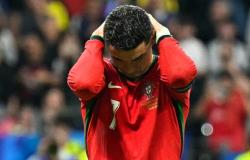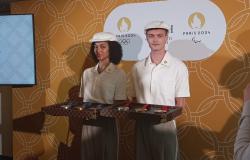Solar: The law for a poorly adapted “net zero” industry
The announcement had the effect of a bomb. On February 23, Swiss solar panel manufacturer Meyer Burger indicated that it would close its factory near Dresden, Germany, preferring to invest in the United States. In April, Nantes-based Systovi announced the cessation of its activities. At the beginning of January, the European solar manufacturing council (ESMC), representing 80 European photovoltaic module manufacturers, was already sounding the alarm, asking the European Commission to “rapidly implement emergency measures” in the face of the surge. of Chinese modules at knockdown prices. Their stocks in European ports and warehouses represent, according to the organization, a capacity of 70 to 85 GW.
However, in 2022, the Commission had set up a European Alliance of the photovoltaic solar industry, led by the EIT InnoEnergy with the SolarPower Europe union and the ESMC, to increase the annual capacity by 30 GW by 2025, by facilitating investment and reducing risks. And the innovation fund finances more efficient photovoltaic module factories, such as Enel’s 3Sun factory in Sicily or that of Carbon in Fos-sur-Mer (Bouches-du-Rhône).
The European law for a zero-emission industry, or Net zero industry act (NZIA), which sets a target of 40% local production for all green technologies and allows states to integrate “non-price” criteria into procedures public purchasing, should give some oxygen to local producers. But she arrives too late. “It has just been adopted and will take months to really have an impact», says Bertrand Bouchet, CEA representative in Brussels.
Given the climate emergency and the need for renewable energies to move away from fossil fuels, Europe cannot do without Chinese panels. Relaunching the anti-dumping tax implemented by Europe in 2013 and abolished in 2018 is not on the agenda.
Wind power: An emergency package for the sector
Everything was going so well though. With the Danish Vestas and the German Siemens Gamesa, Europe had two of the three main manufacturers of wind turbines in the world, which allowed operators to develop projects that could do without public subsidies. And then, patatras.
After the Covid crisis and since the war in Ukraine, the sector found itself facing a set of challenges: poorly calibrated calls for tenders with target prices that were too low, complex authorization procedures, inflation, lack of skills and new international competition. While until now Chinese manufacturers have focused on their domestic market, they are starting to export, with “prices and financing conditions that few European companies can grant, such as paying two to three years after installation», Explains Michel Gioria, the general delegate of France wind energy.
The Commission reacted by proposing, in October 2023, a wind package, including a set of measures to support the sector, in particular an improvement in auction systems and financial guarantees from the European Investment Bank. All member states, except Hungary, have committed to applying them in a charter. To be continued.
Electrolysers: Ignition delay in hydrogen
However, the European Commission had planned everything. To reach 10 million tonnes of green hydrogen produced per year in 2030 in Europe, it launched a major hydrogen project of common European interest (Piiec) in 2020 to remove the cap on state aid for the sector.
In July 2022, after long months of waiting due to a lack of resources from the Commission, Europe authorized more than 5 billion euros in aid for 41 industrial equipment projects in 15 countries, including 10 in France . Then 5.2 billion euros for 37 hydrogen production projects in 15 countries and, at the start of the year, 6.9 billion euros in aid for 33 storage and transport infrastructures.
Alas, despite the three billion planned for the Hydrogen Bank, the investment decisions of manufacturers are still pending. The first production units are equipped with Norwegian, American or Chinese electrolyzers. China holds 50% of the world’s electrolyzer production capacity. Despite performance problems, it continues to invest.
Heat pumps: The hope of Europeans
“There is no immediate danger of being overtaken,” boasts the European heat pump association. Unlike other green technologies, Europe still has room to defend itself in this market, boosted by the REPowerEU plan. Nearly 60% of pumps installed on the continent are manufactured in Europe. Nevertheless “the majority of the most basic pumps, intended for individual homes, already come from Asia», nuance Éric Baudry, director of public affairs of the Intuis group, with Chinese imports which have almost doubled between 2021 and 2022, to nearly 900 million euros.
European manufacturers could represent 35% of global production in 2030, according to the International Energy Agency, compared to 20% currently, doubling China and the United States. All factory projects still need to be completed. However, since last year, sales have collapsed with the fall in gas prices and the decline in public support. Enough to pause part of the 7 billion euros of investments announced by European manufacturers in new capacities between now and 2025. The postponement of the Commission’s action plan to support the sector, after the elections, worries the actors.
Other avenues are being explored. France is working, as with electric vehicles, on a tax bonus reserved for the greenest products, a way of favoring made in Europe without saying it. European regulations can also be useful. By 2027, the most climate-damaging refrigerant gases will be banned in Europe. Enough to leave European manufacturers, at the forefront on the subject, a few years ahead of their competitors.






